In times of grave difficulties, NASA keeps on
bathing us on good news, namely the
progression of (a) the Phoenix Rover, and
(b) the Shuttle Mission to the International
Space Station. These are two extreme
milestones. Thanks NASA. Andy
HOUSTON, Texas (AP) -- The international space station's toilet trouble appeared to be taken care of Wednesday after a Russian cosmonaut replaced a malfunctioning pump.

Astronaut Ron Garan floats in the payload bay of the shuttle Discovery during a space walk Tuesday.
The space station's toilet broke two weeks ago.
The problem, confined to the urine side of the commode, forced the orbiting outpost's crew of an American astronaut and two Russian cosmonauts to flush manually with extra water several times a day.
Space shuttle Discovery brought up a new pump for the toilet, as well as the space station's newest room, a $1 billion Japanese lab.
Oleg Kononenko spent more than two hours installing the 35-pound pump and hoses and then running three tests of the toilet while he talked with specialists at Russian Mission Control, just outside Moscow.
The toilet worked normally. It transports urine via air flow to the pump, which separates the gas and liquid.
"Let's start using it," Russian Mission Control told Kononenko, one of the two Russians living aboard the space station. "We'll keep our fingers crossed."
Kononenko was asked to give periodic reports on how the toilet was working.
While Kononenko fixed the toilet, other members of the shuttle and space station crews were busy making power, data, air and water connections on the newly installed lab, named Kibo, which means hope in Japanese.
Don't Miss
Japanese astronaut Akihiko Hoshide installed the 37-foot lab Tuesday, just as two crewmates were completing a spacewalk. ![]() Watch the spacewalk »
Watch the spacewalk »
He used the space station's robot arm to nudge the bus-sized lab into place.
On Wednesday, Hoshide "will get to turn the module on for the first time. That will be really exciting," said Emily Nelson, a space station flight director.
Later in the day, the 10 space fliers on the linked shuttle and station planned to open the doors to the lab and float in.
The long process of installing Kibo began with a spacewalk by Michael Fossum and Ronald Garan Jr. They removed covers and disconnected cables, then handed off to the robot arm-operators inside, who lifted the lab out of Discovery's payload bay and attached it to the space station.
The Japanese lab is bigger and more sophisticated than the two other labs at the space station. It sports a hatch to the outside and a robot arm for sliding out science experiments. A smaller arm will arrive next spring, along with an outdoor porch for holding the experiment packages.
The first part of Kibo -- essentially a storage shed -- was delivered by the last shuttle crew in March. The astronauts aboard the linked shuttle and station will attach the shed to the lab Friday.
The lab work was just part of Tuesday's spacewalk, the first of three planned for Discovery's nine-day space station visit. ![]() Watch the astronauts work inside the shuttle »
Watch the astronauts work inside the shuttle »
Fossum and Garan also helped remove a 50-foot shuttle inspection boom from the space station and get it back to Discovery. The boom, usually attached to the shuttle's robotic arm and used to conduct a detailed inspection of the spacecraft's wings and nose, was checked out Wednesday, and its sensors appeared to be working properly.
The spacewalkers also worked on the station's jammed solar wing rotating joint. Fossum tried out some cleaning techniques on the joint, which is gummed up with metal shavings, while Garan put in a new bearing.

The joint has been used only sparingly since last fall, hampering energy production. The joint enables the space station's solar arrays, which provide electrical power, to rotate and track the sun. NASA still does not know where the grit came from or how best to deal with the problem.
The photos taken by the space station residents just before Monday's linkup uncovered just four small areas of tile damage on Discovery's belly. The damage is so slight that no detailed inspection will be required, said LeRoy Cain, chairman of the mission management team.
Copyright 2008 The Associated Press. All rights reserved.This material may not be published, broadcast, rewritten, or redistributed.
All About International Space Station • Space Shuttle Discovery
Blogs talking about this topic:
6 days ago
International Space Station’s commode gets fixed
Filed under: Household It’s amazing how quickly humans can remedy problems when really placed in a bind, and rather than waiting for supplies to come up with Discovery next week, crew members aboard the International Space Station were able to solve their little dilemma already. Reportedly, cosmonauts were able to cure whatever was ailing the tem...
2 days ago
Space toilets
The only toilet on the International Space Station was having problems for a week, but fortunately it’s working once again. To celebrate, Scientific American’s JR Minkel takes a look back at NASA’s space toilets. From Scientific American: In an interview published in 1977 Apollo astronaut Rusty Schweickart called the dump of waste liquid at sunset ...
2 days ago
... rel="bookmark" title="Permanent Link to Space Shuttle te...
Posted by Dana Blankenhorn @ 9:31 am Categories: General , Medical Equipment , Hospital Equipment , Robots , Robotic Surgery Tags: Space Shuttle , Surgeon , Model-driven Architecture , Model Driven Architecture , Ooa/Ood/Oop , Software Development , Software/Web Development , Dana Blankenhorn A robotic surgeon based on military techn...
Preferred Sites:
www.AgosBlogs.blogspot.com
www.AndyBelieves.Blogspot.com
www.AndyBelieves2.blogspot.com
www.AndresAgostini.blogspot.com
www.youtube.com/watch?v=tOHiKT127DM




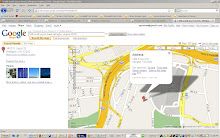














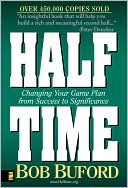

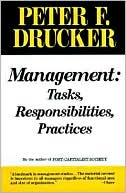































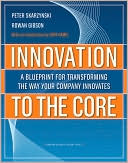







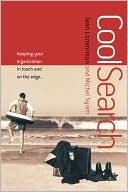















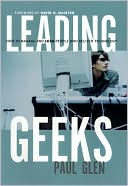











































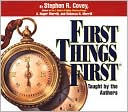












































No comments:
Post a Comment